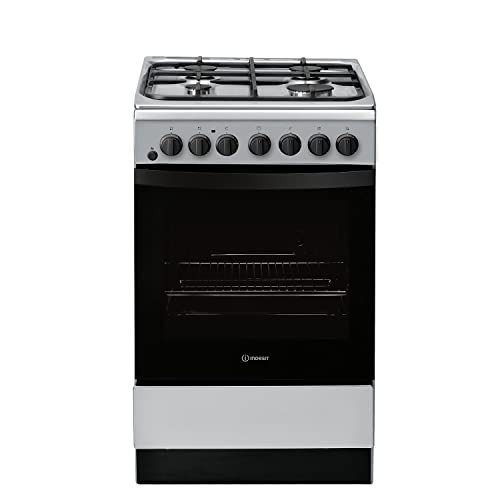11 Strategies To Completely Defy Your Oven Hob
Understanding Oven Hobs: The Heart of Culinary Crafting
In the world of modern kitchen areas, the oven hob sticks out as a vital home appliance. Not just is it a main part for cooking a variety of meals, however it also affects kitchen aesthetics, performance, and efficiency. This post dives into the types of oven hobs, their functions, advantages, and maintenance tips. Additionally, it resolves some frequently asked questions to supply a comprehensive understanding of this essential kitchen home appliance.
Types of Oven Hobs
Oven hobs can be categorized into numerous types based on their energy source and style. Understanding these variations can help consumers make notified choices when selecting the ideal hob for their kitchen needs.
1. Gas Hobs
Gas hobs use gas or propane as fuel, using exact temperature control and immediate heat. They are favored by many chefs for their capability to provide visual feedback through flame.
Pros:
- Quick heat-up time.
- Precise temperature changes.
- Suitable with all types of cookware.
Cons:
- Requires a continuous gas supply.
- Safety concerns with open flames.
- Needs more upkeep.
2. Electric Hobs
Electric hobs are powered by electricity and feature smooth glass or ceramic surface areas. They frequently can be found in 2 types: coil and solid.
Pros:
- Sleek appearance.
- No open flames, lowering safety risks.
- Easy to clean up.
Cons:
- Slower to heat up and cool down.
- May need particular pots and pans (induction).
- Some might have irregular heat circulation.
3. Induction Hobs
Induction hobs use electro-magnetic energy to directly heat up pots and pans. They just deal with ferromagnetic pots and pans.
Pros:
- Very energy-efficient.
- Quick heating and cooling times.
- Safe, as the surface area remains reasonably cool.
Cons:
- Limited to specific types of pots and pans.
- Greater initial cost.
- Can produce sound when in use.
4. Strong Plate Hobs
These electric hobs include strong metal plates that warm up and retain heat for cooking.
Pros:
- Durable and trusted.
- Uncomplicated operation.
Cons:
- Takes time to warm up.
- Less efficient than induction and gas designs.
Hob Type
Heat Source
Aesthetic appeals
Maintenance
Gas Hobs
Gas
Traditional
Moderate
Electric Hobs
Electrical energy
Modern/Sleek
Low
Induction Hobs
Electromagnetic
Contemporary
Low
Strong Plate Hobs
Electricity
Timeless
Average
Functions to Consider When Choosing an Oven Hob
When picking the ideal oven hob for your kitchen, there are numerous essential functions to take into account. These include:
- Size: Ensure the hob fits the designated space in your kitchen.
- Number of Burners: Consider your cooking design and the number of burners you'll need.
- Control Type: Look for user-friendly controls, whether touch-sensitive or knobs.
- Security Features: Many contemporary hobs consist of safety procedures like flame failure devices or kid locks.
- Energy Efficiency: Choose energy-efficient models to minimize energy expenses and minimize your environmental impact.
Benefits of Using an Oven Hob
The oven hob supplies a number of benefits that cater to both amateur cooks and expert chefs. Here are some essential advantages:
- Versatility: Whether boiling, frying, simmering, or sautéing, an oven hob accommodates different cooking methods.
- Convenience: Many hobs featured additional functions like timers and automated shut-off systems for added convenience in hectic kitchen areas.
- Enhanced Cooking Control: The immediate heat actions of gas and induction hobs enable much better control over cooking temperatures.
- Style Enhancement: Modern hobs can enhance the total aesthetic of a kitchen, including a contemporary touch.
Maintenance Tips for an Oven Hob
To ensure the longevity and efficiency of an oven hob, appropriate upkeep is essential. Here are some maintenance ideas:
Regular Cleaning:
- Use a soft fabric and moderate cleaning agent to clean surfaces after each usage.
- For induction and ceramic hobs, avoid abrasive cleaners to avoid scratching.
Look for Wear and Tear:
- Inspect rubber seals and connections in gas hobs frequently for any damages or leaks.
- Guarantee electrical connections are safe in electric hobs.
Expert Servicing:
- Schedule routine maintenance talk to a qualified specialist to avoid significant concerns.
The oven hob is a crucial component in any kitchen, working as a centerpiece for cooking undertakings. Whether picking gas, electric, or induction, comprehending the various types, functions, and upkeep requirements is important for making a knowledgeable decision. A well-chosen hob not just enhances cooking efficiency however likewise improves the total kitchen experience.
Frequently Asked Questions (FAQs)
1. What type of hob is best for a beginner?
Electric hobs are frequently preferred by novices due to their ease of usage and maintenance.
2. Can I use all cookware on an induction hob?
No, induction hobs require ferromagnetic cookware for them to work properly.
3. How do I know if my gas hob is working efficiently?
Routinely look for even flame circulation and listen for any hissing noises that may show leakages. If in doubt, consult a professional.
4. Is a higher price always much better for hobs?
Not necessarily. While Hobs Sale -priced designs may provide innovative features, numerous mid-range products offer excellent efficiency and durability.
5. Can I set up a hob myself?
It is advisable to work with a professional, particularly for gas hobs, due to security concerns and regional guidelines.
By understanding the subtleties of oven hobs, home cooks can make a well-informed decision that aligns with their cooking ambitions and kitchen styles. Picking the right hob boosts both the cooking experience and kitchen aesthetics, making it an essential financial investment for any home.
